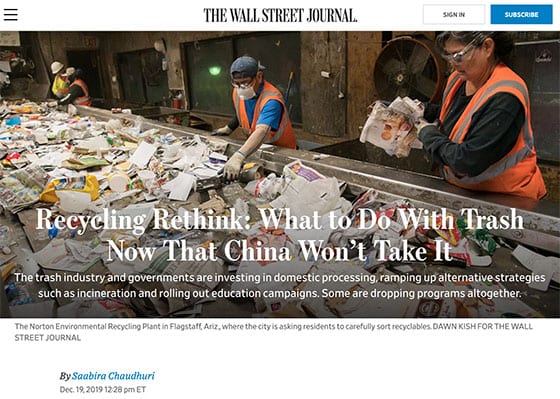We each have hunches regarding why people engage in activities such as walking to work, recycling, or getting vaccinated. For instance, theories regarding personal motivations for recycling abound. Recycling, it has been suggested, is popular because it alleviates our guilt for not adopting the more inconvenient aspects of sustainable living. This hypothesis suggests that curbside recycling is simply an antidote to the guilt we feel when, for example, just after placing our recycling container at the curb, we hop into our personal global warming factory and head off to work.
Other theories suggest that individuals recycle because it is convenient, those around us recycle, it makes us feel good about ourselves, or are simply badgered by our children into recycling.
Hunches regarding what motivates people to engage in environmental, health, or safety behaviors are important. However, these personal theories are simply speculation. Speculation regarding what leads individuals to engage in a particular behavior should not be used as the foundation for a community-based social marketing plan. Before designing such a plan, you need to set aside personal speculation and collect information to inform your efforts adequately. To create an effective community-based social marketing strategy, you need to discover the actual barriers that inhibit individuals from engaging in the activity and what would motivate them to act. Once you have this information, you are well-positioned to create an effective strategy.
Uncovering Barriers & Benefits
Uncovering barriers and benefits involves four steps:
- Begin by reviewing relevant articles and reports;
- Following this review, if possible, carry out observations of people engaging in the behavior you wish to promote (e.g., biking to work) and the behavior you want to dissuade people from participating in (e.g., driving to work);
- Conduct focus groups to explore in-depth the attitudes and behaviors of your target audience regarding the activities you wish to encourage and discourage; and
- Building on the information obtained from the focus groups, create and conduct a survey with a random sample of your target audience.
Most of the time, you will want to carry out these steps in the order set out above. Why? In nearly all cases beginning with a literature review will inform each of the subsequent steps. Further, we can often develop a more effective survey instrument if the survey follows a literature review, observations, and focus groups. Having carried out the previous steps provides us with greater clarity regarding the barriers and benefits we will want to explore in a survey.
Note that each of these four methods has inherent strengths and weaknesses. Focus groups, for instance, provide us with rich, detailed information regarding what our audience perceives to be their barriers and benefits, but focus groups usually have abysmal participation rates. Combining focus groups with other strategies helps to compensate for this weakness.
Over the next several Minutes, I’ll discuss these options and low-cost alternatives in more detail.
If you find the Minute helpful, please consider sharing it with colleagues. I’m delivering virtual workshops in October for Australia and New Zealand (more here). Interested in attending my fall virtual workshops in North America? Sign up here to be alerted when we announce those trainings. If you are interested in hosting a workshop, learn more here.
Thanks for reading this week. Take care and stay safe.
Best, Doug
Doug McKenzie-Mohr, Ph.D.
Founder, Community-Based Social Marketing
Author, Fostering Sustainable Behavior
Did someone forward this email to you? Click here to sign up to receive the weekly Fostering Behavior Change Minute.


